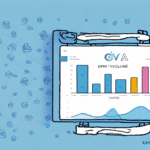Understanding Cart Abandonment
In the ever-growing world of e-commerce, cart abandonment remains a significant challenge for businesses. Cart abandonment occurs when customers add items to their shopping cart but leave the website without completing the purchase. With an average abandonment rate hovering around 68.8%, addressing this issue is crucial for maximizing sales and enhancing customer retention.
Importance of an Abandoned Cart Strategy
Implementing an effective abandoned cart strategy is essential for recovering potential lost sales. By targeting customers who have shown purchase intent but didn’t complete the transaction, businesses can:
- Increase conversion rates
- Boost overall revenue
- Enhance customer loyalty
According to a Baymard Institute study, optimizing cart abandonment strategies can significantly improve e-commerce performance.
Common Reasons for Cart Abandonment
Understanding why customers abandon their carts is the first step in creating an effective recovery strategy. Common reasons include:
- Unexpected Shipping Costs: High or surprise shipping fees can deter customers from completing their purchases.
- Complicated Checkout Process: Lengthy or confusing checkout steps can frustrate users, leading them to abandon their carts.
- Website Errors: Technical issues such as broken links or slow loading times can disrupt the purchasing process.
- Lack of Trust: Customers may hesitate to complete transactions if the website lacks credibility or security.
- Limited Payment Options: Not offering preferred payment methods like PayPal or Apple Pay can lead to abandonment.
- Price Comparison: Shoppers might add items to their cart to compare prices elsewhere without the intention to purchase immediately.
Addressing these factors can significantly reduce cart abandonment rates and improve the overall shopping experience.
Strategies to Recover Abandoned Carts
Email Retargeting
Email retargeting is one of the most effective methods for recovering abandoned carts. By sending personalized follow-up emails, businesses can remind customers of the items left in their carts and encourage them to complete their purchase. Effective email retargeting strategies include:
- Personalized Messages: Include the customer’s name and specific product details to create a tailored experience.
- Incentives: Offer discounts, free shipping, or exclusive deals to entice customers to finalize their purchase.
- Timing: Send the first follow-up email within a few hours of abandonment, followed by subsequent reminders if necessary.
A study by Campaign Monitor shows that approximately 45% of cart abandonment emails result in recovered sales.
Exit Intent Pop-Ups
Exit intent pop-ups are designed to capture a customer’s attention as they attempt to leave the website. These pop-ups can offer incentives or remind customers of their abandoned items, providing a last-minute opportunity to recover the sale. Best practices for exit intent pop-ups include:
- Clear Messaging: Communicate the value of completing the purchase succinctly.
- Enticing Offers: Provide discounts or special offers that are compelling enough to encourage action.
- Minimal Disruption: Ensure that pop-ups are not overly intrusive, maintaining a positive user experience.
According to Drip, exit intent pop-ups can recover up to 10% of abandoned carts when implemented effectively.
Offering Incentives and Discounts
Providing incentives is a powerful way to encourage customers to complete their purchases. Common incentives include:
- Discount Codes: Offer a percentage or fixed amount off the total purchase.
- Free Shipping: Eliminate shipping costs to make the purchase more attractive.
- Bundled Offers: Provide discounts on additional products when purchased together.
These incentives should be used strategically to avoid diminishing profit margins while still providing enough value to sway the customer’s decision.
Optimizing the Shopping Experience
Streamlining the Checkout Process
A smooth and efficient checkout process is critical in preventing cart abandonment. Key strategies include:
- Minimize Steps: Reduce the number of steps required to complete the purchase.
- Guest Checkout: Allow customers to complete purchases without creating an account.
- Multiple Payment Options: Offer a variety of payment methods to accommodate different preferences.
- Auto-Fill Features: Enable auto-fill for customer information to expedite the process.
Research by Nielsen Norman Group highlights that simplifying the checkout process can lead to a significant increase in completed transactions.
Personalizing the Shopping Experience
Creating a personalized shopping experience can enhance customer satisfaction and increase the likelihood of purchase completion. Techniques include:
- Product Recommendations: Suggest products based on the customer’s browsing and purchase history.
- Customized Content: Tailor content and offers to individual customer preferences.
- Responsive Design: Ensure the website is mobile-friendly and provides a seamless experience across all devices.
According to Salesforce, personalized experiences can boost conversion rates by up to 20%.
Analyzing and Improving Your Strategy
Data Analysis
Analyzing e-commerce data is essential for identifying cart abandonment trends and understanding customer behavior. Important data points to consider include:
- Abandonment Rates: Track the percentage of visitors who leave without completing a purchase.
- Checkout Funnel Analysis: Identify at which stage customers are dropping off in the checkout process.
- Customer Segmentation: Analyze different customer groups to tailor recovery strategies effectively.
Utilizing tools like Google Analytics can provide valuable insights into customer behavior and abandonment patterns.
Testing and Optimization
Continuous testing and optimization are vital for maintaining an effective abandoned cart recovery strategy. Key practices include:
- A/B Testing: Experiment with different email subject lines, offers, and send times to determine what resonates best with customers.
- Performance Monitoring: Regularly review campaign performance metrics to identify areas for improvement.
- Iterative Improvements: Implement changes based on data-driven insights to enhance strategy effectiveness.
According to Optimizely, businesses that engage in regular A/B testing experience higher conversion rates and better overall performance.
Measuring Success
Key Metrics to Track
Measuring the success of your abandoned cart strategy involves tracking various metrics to assess performance and identify improvement areas. Important metrics include:
- Cart Abandonment Rate: The percentage of shoppers who abandon their carts compared to those who complete purchases.
- Conversion Rate: The percentage of recovered carts that result in completed sales.
- Average Order Value (AOV): The average amount spent per order, which can indicate the effectiveness of upselling and cross-selling strategies.
- Email Open and Click-Through Rates: Measure the engagement levels of your email retargeting campaigns.
- Revenue from Abandoned Carts: Track the total revenue generated from recovered carts to evaluate overall strategy effectiveness.
Monitoring these metrics helps in refining strategies and ensuring continuous improvement.
Case Studies
Examining real-world examples of successful abandoned cart recovery strategies can provide valuable insights and inspiration:
- Company A: Implemented personalized email campaigns and saw a 17.9% increase in recovered sales.
- Company B: Introduced free shipping thresholds, resulting in a 25% boost in cart recovery rates.
These case studies demonstrate the tangible benefits of implementing tailored and strategic abandoned cart recovery methods.
Preventing Future Cart Abandonment
Prevention is just as important as recovery when it comes to cart abandonment. Implementing best practices can help reduce future abandonment rates:
- Exceptional Customer Service: Provide responsive support through live chat, email, and phone to assist customers promptly.
- Transparent Policies: Clearly communicate shipping, return, and privacy policies to build trust with customers.
- Secure Website: Ensure that your website uses SSL certificates and other security measures to protect customer data.
- Streamlined Navigation: Make it easy for customers to find products and information without unnecessary complications.
Staying Competitive in E-commerce
An effective abandoned cart strategy not only helps in recovering lost sales but also plays a pivotal role in maintaining a competitive edge in the e-commerce landscape. By continuously understanding customer behavior, optimizing the shopping experience, and refining recovery tactics, businesses can:
- Enhance customer satisfaction and loyalty
- Increase overall revenue and profitability
- Adapt to changing market trends and consumer preferences
Staying ahead of the competition requires a commitment to excellence in every aspect of the customer journey, from initial browsing to post-purchase support.
In conclusion, developing and maintaining an effective abandoned cart strategy is crucial for the success of any e-commerce business. By addressing the common reasons for cart abandonment, implementing strategic recovery methods, and continuously analyzing and optimizing your approach, businesses can recover lost sales, increase revenue, and foster long-term customer loyalty.




















